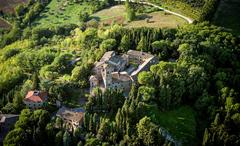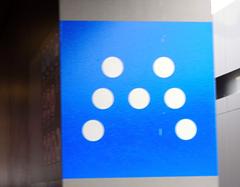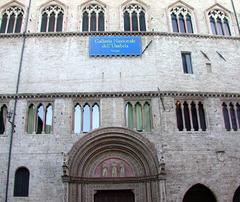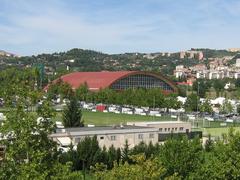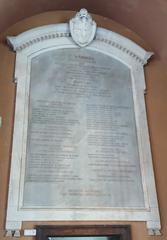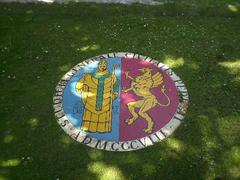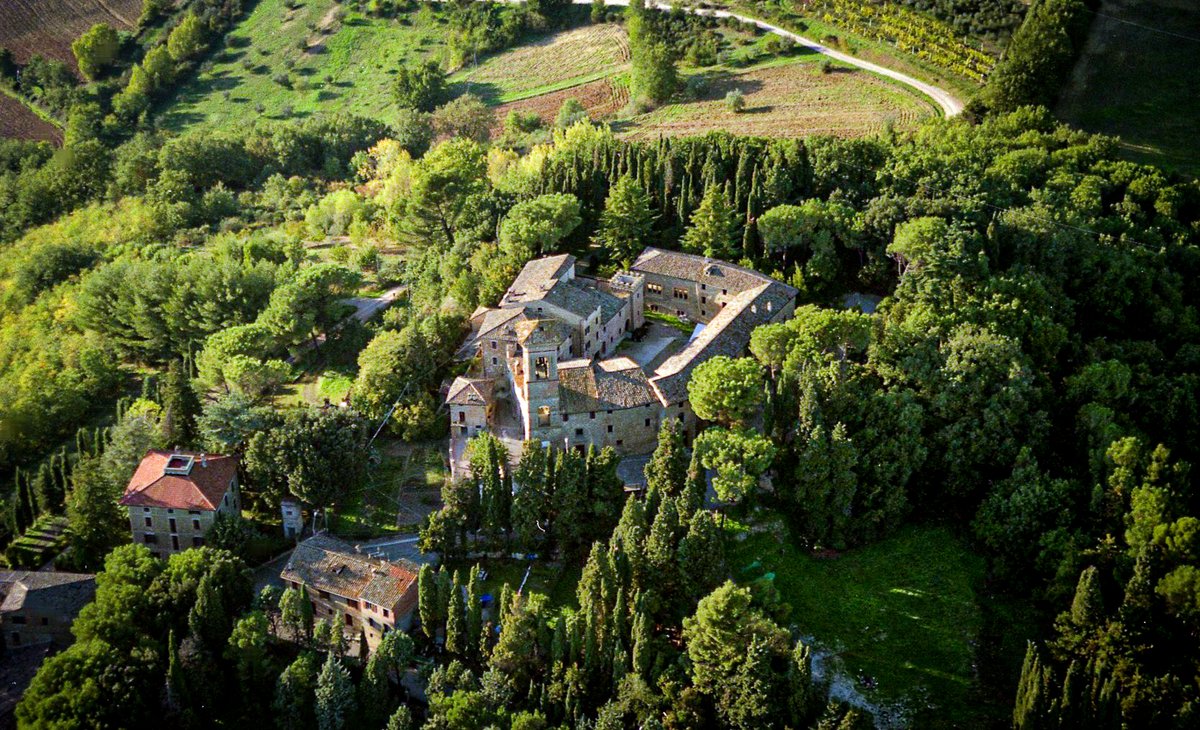
Castello di Civitella d’Arna: Visiting Hours, Tickets, and Complete Perugia Historical Sites Guide
Date: 14/06/2025
Introduction
Perched atop a scenic hill between the Tiber and Chiascio rivers, just east of Perugia, Castello di Civitella d’Arna is a remarkable destination for anyone seeking to explore the layered history and enduring traditions of Umbria. This guide presents everything you need to plan your visit—covering the castle’s origins, architectural and archaeological highlights, event calendar, accessibility, tickets, travel tips, and nearby attractions. Whether you are a history enthusiast, a culture lover, or a curious traveler, Castello di Civitella d’Arna offers a deep dive into the living heritage of central Italy (Ecomuseo del Tevere; Emozioni in Umbria; Wikipedia - Civitella d’Arna).
Historical Overview
Ancient Origins
Civitella d’Arna’s strategic hilltop location has attracted settlements since the Lower Paleolithic, with archaeological finds spanning the Iron Age and significant Etruscan occupation. The site’s name, “Arna,” is rooted in the ancient Umbrian word for “flowing water”—a nod to its proximity to two rivers (Ecomuseo del Tevere). By the 6th–4th centuries BCE, the area was a fortified oppidum featuring a sanctuary evidenced by votive bronzes, ceramic vessels, and tomb artifacts—many of which are displayed at the Museo Archeologico Nazionale dell’Umbria.
Roman Municipium and Urban Development
Following Rome’s conquest, Arna became a municipium and was incorporated into Regio VI (Umbria), with its citizens enrolled in the Clustumina tribe. The Roman period saw the construction of monumental cisterns (still visible today), rural villae, and a temple dedicated to Fortuna (referenced in Latin inscriptions CIL XI 5607–5611). Notably, a bronze head of the god Hypnos, found here, resides in the British Museum (British Museum).
Medieval Rebirth
After a period of decline in late antiquity, the 13th century marked the construction of the present castle by the city of Perugia. The fortress, first documented in 1297, was built atop Roman remains, providing control over vital routes towards Gubbio and the Adriatic. The castle complex includes the parish church of San Lorenzo, which preserves a rare 15th-century gonfalone attributed to Bartolomeo Caporali (Ecomuseo del Tevere). Ownership passed through several noble families, each adding to its historical and architectural legacy (Lolivo e La Ginestra).
Architectural and Archaeological Highlights
- Roman Cisterns: Subterranean chambers constructed with Roman concrete, crucial for water storage and siege survival (Ecomuseo del Tevere).
- Parish Church of San Lorenzo: Houses Renaissance religious art, most notably the 1492 gonfalone.
- Medieval Walls & Towers: Defensive structures built with local limestone, reflecting the castle’s military past.
- Restoration: Recent conservation efforts, especially after the 1997 earthquake, have maintained the integrity of the castle and its foundations (Il Luoghi del Silenzio).
Cultural Significance and Traditions
Festivals and the Dialect
Civitella d’Arna’s cultural calendar is highlighted by the annual “Festa delle Campane e del Dialetto Perugino,” held in August after Ferragosto. This festival features historical reenactments, traditional Umbrian cuisine, artisanal craft displays, bell casting ceremonies, and performances in the Perugian dialect, celebrating local identity and language (Umbria Online).
Gastronomy
The village’s rural roots are evident in its cuisine: torta al testo, wild boar stew, cured meats, and local wines are festival staples. The region’s agricultural calendar shapes village life and communal events (Rossi Writes).
Community
Despite its size, Civitella d’Arna has a vibrant community spirit. Local associations organize tours, festivals, and educational programs that preserve and promote its heritage.
Visiting Castello di Civitella d’Arna
Opening Hours
- Standard: Open year-round, best visited during daylight hours.
- Museum & Church: Typically open from 9:00 AM to 6:00 PM, Tuesday to Sunday; closed on Mondays and select holidays. Extended hours during festival weeks.
- Special Events: Some interiors are only accessible during guided tours or festivals.
Tickets
- Castle and Village: Generally free entry.
- Museum/Church/Guided Tours: Fees may apply (typically €8 for adults, discounts for children and groups). Tickets can be purchased on-site or online (Ecomuseo del Tevere).
- Festival Events: Some activities may have separate charges.
Accessibility
- Physical Access: Cobblestone lanes and medieval terrain mean limited wheelchair access, but efforts are ongoing to improve inclusivity.
- Mobility Assistance: Contact local tourism offices in advance for support or alternative routes.
Getting There
- By Car: About 10 km (20 minutes) east of Perugia; free parking at the village entrance.
- Public Transport: Limited bus service; car recommended.
- Cycling/Hiking: Scenic countryside routes are available.
Facilities
- Restrooms: Limited; available in local bars and during festivals.
- Dining: Small trattorias and bars offer Umbrian specialties.
- Accommodation: Agriturismi and countryside inns nearby (Emozioni in Umbria).
Guided Tours & Photographic Spots
- Tours: Book via local tourism offices or Ecomuseo del Tevere.
- Photography: Panoramic village views, castle architecture, and festival scenes make for excellent photo opportunities.
Tips for an Enriching Visit
- Plan for Festivals: The August “Festa delle Campane” is the most atmospheric time to visit.
- Engage with Locals: Conversing with residents—especially during events—deepens your understanding of dialect and customs.
- Combine with Perugia: Pair your visit with Perugia’s historic center, museums, and other landmarks (The Crazy Tourist).
- Respect the Village: It is a living community; maintain quiet and respect private property.
Nearby Attractions
- Perugia’s Historic Center: Including Palazzo dei Priori, San Lorenzo Cathedral, and the Etruscan Arch.
- Museo Archeologico Nazionale dell’Umbria: Etruscan, Roman, and medieval collections.
- Monte Tezio Natural Park: Hiking and nature.
- Local Wineries: Experience Umbrian wine and olive oil production.
FAQs
Q: What are the opening hours?
A: Typically 9:00 AM to 6:00 PM Tuesday–Sunday; check the official website for updates.
Q: Are tickets required?
A: General entry is free; certain areas or guided tours may require a ticket.
Q: Is the site wheelchair accessible?
A: Partial accessibility due to medieval terrain; contact ahead for assistance.
Q: When is the best time to visit?
A: August festival for lively culture, or spring/autumn for tranquility.
Q: How do I get there from Perugia?
A: By car in 20 minutes; limited public transport available.
Conclusion
Castello di Civitella d’Arna offers an unparalleled journey through Umbrian history, from ancient settlements and Roman engineering to medieval fortifications and vibrant modern traditions. With free access, a welcoming community, and proximity to Perugia’s greatest sites, it’s a must for travelers seeking authentic Italian culture. Plan your trip for the annual festival, explore the castle’s rich layers, and immerse yourself in the heart of rural Umbria.
For updated information, tickets, and event schedules, visit the Ecomuseo del Tevere or the Emozioni in Umbria portal.
References
- Wikipedia - Civitella d’Arna
- Ecomuseo del Tevere
- Emozioni in Umbria
- British Museum Collection
- Umbria Online
- Il Luoghi del Silenzio
- The Crazy Tourist
- Rossi Writes
- Lolivo e La Ginestra
